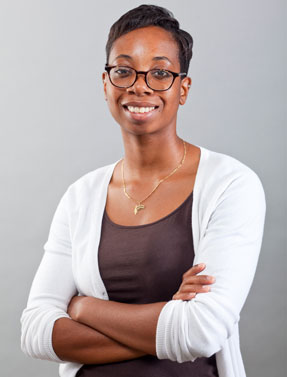Chaprece Henry | January 16, 2014
 When Matt Scallet arrived at the nonprofit Groundswell in 2013, his task was clear. As an EDF Climate Corps fellow, he was to take a deep hard look at how Groundswell helped other nonprofits create demand for renewable energy by purchasing renewable energy credits (RECs). The idea was to help nonprofits save additional money while purchasing wind energy and do so in a way that helps wind producers stay competitive and builds new wind energy infrastructure.
When Matt Scallet arrived at the nonprofit Groundswell in 2013, his task was clear. As an EDF Climate Corps fellow, he was to take a deep hard look at how Groundswell helped other nonprofits create demand for renewable energy by purchasing renewable energy credits (RECs). The idea was to help nonprofits save additional money while purchasing wind energy and do so in a way that helps wind producers stay competitive and builds new wind energy infrastructure.
Groundswell, a non-profit organization based in Washington D.C., has the mission of unlocking the shared economic power of communities in order to grow sustainability and expand prosperity on a local level. Through its Community Power Program, Groundswell brings together mission-based non-profit institutions from across the affordable housing, public charter school, faith communities and other local mission based institutions, to collectively negotiate with energy suppliers for clean electricity at reduced rates.
As a MBA student at the University of North Carolina at Chapel Hill and a previous employee at the Center for Neighborhood Technology, Matt brought prior skill and experience to his work. He set to the work of interviewing program participants and researching markets. He was able to find ways to maximum the quality of the RECs we purchase while proposing innovative ways to separate REC buying from other aspects of the program.
But, one of his achievements was separate from his established work plan. At some point, he realized that a wealth of opportunity existed in the EDF Climate Corps network itself!
While connecting with a group of other EDF Climate Corps fellows in the area, (probably at an infamous D.C. happy hour, we can't confirm), he realized a solid alignment between their efforts. Most notably, the Children's Defense Fund's EDF Climate Corps fellow, Eric Plunkett, highlighted a part of the organization's mission that includes ensuring the surrounding environment is healthy and sustainable, making the reduction of carbon emissions through energy efficiency and clean energy a major priority for the organization. Matt placed Plunkett in touch with Eric Rubin who runs the Groundswell Community Power Program.
Thanks to EDF Climate Corps, common ground was established between two leading nonprofit organizations. Children's Defense Fund was able to join the Community Power Program to purchase 100 percent clean wind energy at reduced rates to power the majority of the organization's buildings. This means it can use the money saved to accomplish its mission of championing programs and policies that protect children and ensure all children, no matter their background, have the strong foundation needed to live healthy lives.
As we begin a new year, this professional "love connection" inspired me. It is just one small example of the powerful community of best practices and solutions EDF Climate Corps is facilitating in the years to come. I'm excited to be a part of this community of shared resources and scalable innovations that will enable our fellows and their hosts – both current and former – to power a low-carbon economy. What collaborative energy management story is inspiring you this year?
About EDF Climate Corps
EDF Climate Corps (edfclimatecorps.org) taps the talents of tomorrow's leaders to save energy, money and the environment by placing specially trained EDF fellows in companies, cities and universities as dedicated energy problem solvers. Working with hundreds of leading organizations, EDF Climate Corps has uncovered nearly $1.3 billion in energy savings. For more information, visit edfclimatecorps.org. Read our blog at edfclimatecorps.org/blog. Follow us on Twitter at twitter.com/edfbiz and on Facebook at facebook.com/EDFClimateCorps.